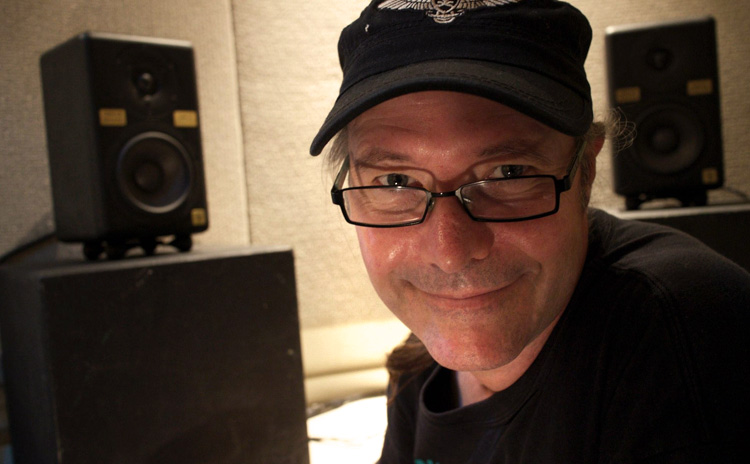Greg Simmons in his own words

Greg Simmons is a writer, educator, traveller and sound recordist with over 30 years of recording experience encompassing everything from heavy metal bands to string quartets, Tibetan monks to snake charmers, and children’s stories to talking dolls. For the last 15 years he has focused on making direct-to-stereo recordings of acoustic music from around the world, and is equally at home working in a concert hall, a cathedral, a mud hut or a rice paddy.
“Making a convincingly natural direct-to-stereo recording of an acoustic performance is very challenging, especially when working outside the controlled environment of a recording studio. My ultimate goal is to capture a performance that doesn’t require any processing before being offered to an audience. It’s an exercise that taxes all of my skills, from microphone choice and placement through to judgements of tonal balance and spatiality (i.e. width, depth and direct-to-reverberant balance). To do it well, I need good monitoring.
“High quality headphones provide excellent tonal performance but due to the lack of interchannel crosstalk there is always an element of uncertainty when judging spatiality – which, in turn, influences my microphone choice and placement. For sessions where I simply must get it right on the day, I prefer to use a pair of desktop monitors. The challenge has always been to find a pair that matches the tonal performance of high quality headphones while also offering an accurate portrayal of the recording’s spatiality. As if that wasn’t hard enough, they must also have very low distortion to ensure they can be listened to intently without causing fatigue, and they must be portable enough to cart to the venue. If the monitors are going to be truly useful to me, there is no room for compromise on any of those criteria.
“The Code 1.5s satisfy all of those criteria beautifully. When I switch back and forth between high quality headphones and the Code 1.5s there is no significant doubt-inducing tonal change that makes me wonder which monitoring to believe. What does change significantly is the sense of spatiality. All of the things that I cannot rely on headphones to portray correctly – width, depth and direct-to-reverberant balance – are all there in the Code 1.5s. They create a remarkable three-dimensional stereo image, something that larger monitors struggle to do at close distances, allowing me to tweak my microphone placement with surgical precision. And finally, their size, weight and build quality allow them to be carted around with relative ease while remaining solid enough to stay put when placed on a bench or stand.
“My only complaint with the Code 1.5s is that I can no longer blame a bad recording on my monitoring.”
